
FlightFins are a popular aftermarket accessory for the Onewheel. They are a pair of thick rubber fins that attach to a “Flight Fender” that provides better stability and control while riding. These are designed for riders to lift their boards up (ollie) and/or provide for better control around obstacles.
The FullFlight System is comprised of three parts: rubber fins (or wedges), a FlightFender that allows the fins to be mounted to the board and a convertible fender (Flightshield). The fins are made of solid rubber whereas the FlightFender and shield are made of a tough nylon material.
What Do FlightFins Do?
This is going to be a debated comment however FlightFins keep you riding on the board without being completely locked in (like a binding on a snowboard would). Your feet wedge between the “fin” and the board giving it just enough of a snug fitting without locking the foot in completely. Personally, I find these incredibly useful for trail riding however some riders don’t like having their feet secured down or considers them as a crutch for riding.
Without Flightfins, the only way to lift the board upwards (like an ollie) would be to bonk (or bollie) off an object. With Flight Fins, you can just jump. Your toes will grab the fins which lift the board. This is similar to Clark Pads on an EUC.
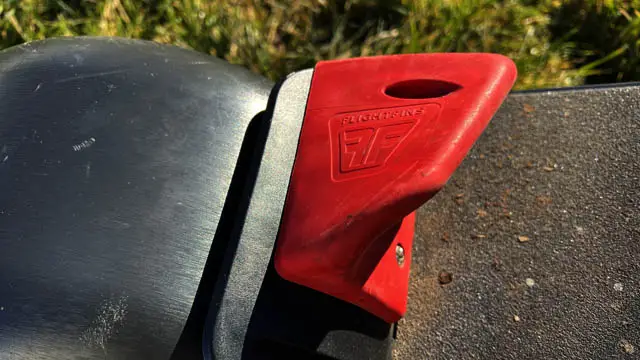
Indestructible Nylon and Rubber Material
The three piece FullFlight system is made of incredible thick and rugged rubber (the fin), the flight shield is made of high strength nylon (Kydex) and lastly the removable fender (FlightShield) is made of either high-grade polycarbonate or nylon.
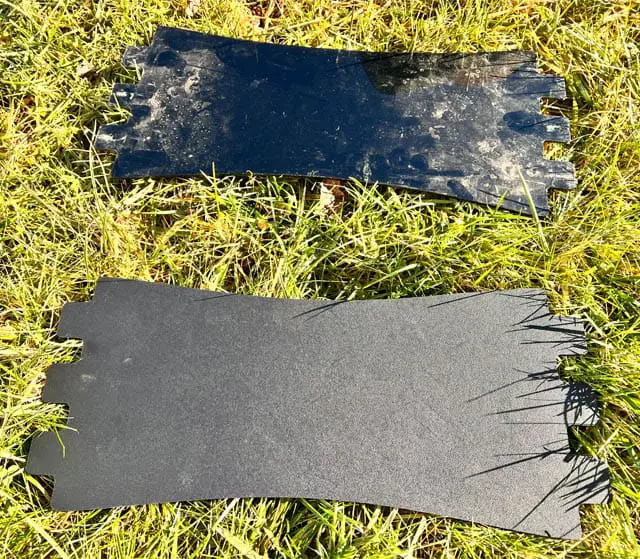
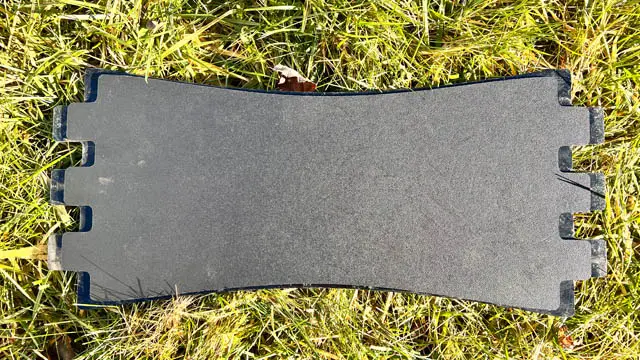
The Fins
The rubber fins are directional and need to be mounted to the flight shield in either ‘Goofy’ or ‘Regular’ stance. You can swap their direction but this does require a Phillips-Head screwdriver and wouldn’t really be something you’d want to tinker with on a trail ride. Can it be done? Yes. Really though, the intent is to affix the Fins to the FlightFender and ride. You can always adjust the Fins higher or lower on the next ride.
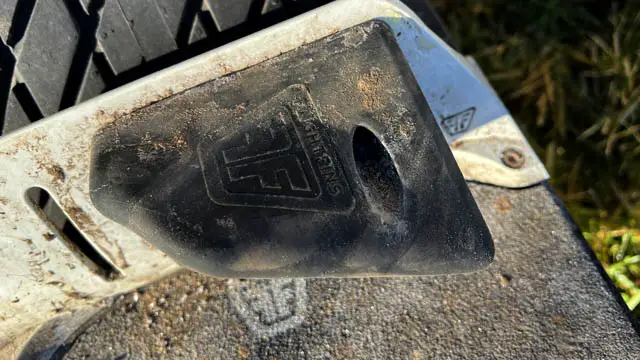
The FlightShield has slots which lets you find the right height for your foot. The right height is where the sneaker can wedge between the footpad and the rubber snuggly. (Minis are bi-directional however are not as securing – see below).
The FlightFender
The FlightFender is a high strength nylon material (Kydex) that acts as the mounting base for the fins and convertible fender (FlightShield). This is a two piece set up affixes to the rails with 8 sex screws. There are some riders that do not purchase the FlightFender and mount the fins directly on the stock fender however as you can see in the image above, the white FlightFender is more vertical which is more accommodating to mounting the fin in a way that the foot can easily fit underneath it.
The stock fenders are too round to really mound directly to it however some riders still use it. This was especially present during the launch of the GT as FlightFins were not initially available and this was the only alternative.
The FlightShield – Convertible droptop for the Oneheel
By far one of the most convenient things about Flight Fins is the removable / convertible fender top. Other than Craft and Ride’s magnetic fender, there is no other fender where you can remove or replace with such ease. The FlightShield is thinner material in comparison to a traditional fender however it does the proper function. With it being so thin, taking it off and cleaning and stowing it away is a great perk.

FlightShields are made of a choice of polycarbonate or nylon. The top fender is a glossy polycarbonate and the lower fender is a nylon matte finish.
The glossy look will not stay glossy on a dusty or dirty trail ride. Each flight fender have three ‘teeth’ that align within slots on the inside of the FlightShield. The fender is essentially tension-fit the entire time you ride.
There is a little bit of “play” within these slots which allow you to manipulate the height (or clearance) of the fender over the tire. Flight Fenders come off quickly simply by relieving some of the tensions on either end and pulling upwards.
The FlightShields are not needed for the functionality of the fins. They are entirely optional.
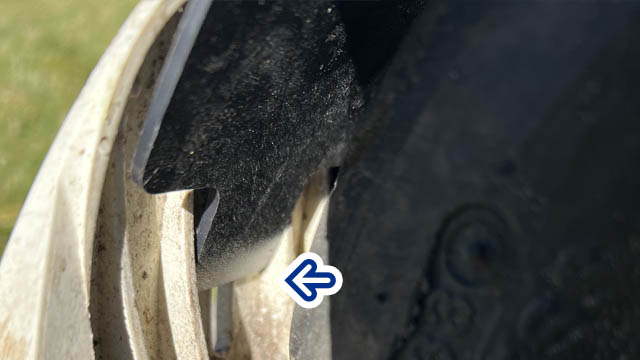
Polycarbonate can give a glossy look but I would not recommend it on trails. It is a stiffer material and it is known to break on riders in the event of a board rollover. Here is a side by side of matte-nylon and gloss polycarbonate.
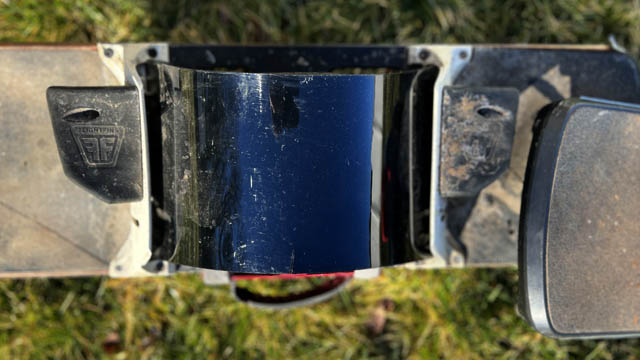
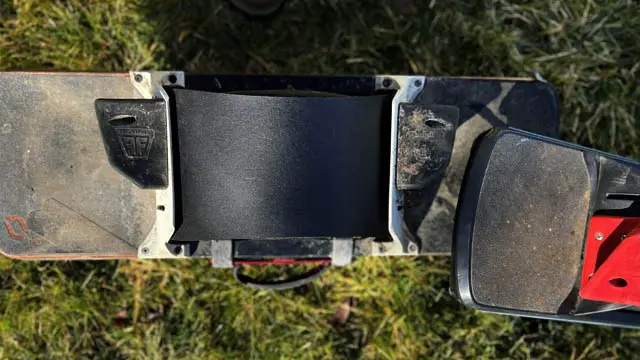
The Pros on FlightFins
- Do not need an object to bonk off of. You can just jump upwards with fins to overcome obstacles.
- The material is very premium and virtually indestructible.
- Convertible fender – easy to rock fenderless or not.
- More terrain availability.
- Better carving and stability.
- More options – mini fins & extenders.
- Built rugged as can be.
With FlightFins you are going to be able to ride rougher terrain. Some riders will disagree however what I’m referring to is riding repeated choppy or chunky terrain without fins that can vibrate your feet right off the board. There’s no chance or time to regain footing. With this accessory, you stay on the board. You also can also overcome larger obstacles by unweighting more of the Onewheel when jumping upwards. New tricks are a possibility as well. You still can bonk however you can really unweight most of the board to elevate that bonk-game.
A danger fender-less trail riders have is landing on their board after bonking off a root or rock. You’re in the air for a split second and have to reposition your feet onto the board without landing on the tire. FlightFins can help bonk over trail obstacles and maintain proper footing throughout the entire ride.
Also, when you are going for deep carves, we try to maintain flat feet on the Onewheel footpads so there’s no way to just lift your toes to get the board at an angle. With fins however you can lift your toes to really get some deep carving action. If you do not like how your foot is secured, FlightFins sells minis which are bidirectional so you can allow for either goofy or regular riders onboard without having to swap fins out. You do take a concession in how secured you are, but minis still allow the rider to lift the board upwards.
The Cons on FlightFins
- Somewhat pricey – couple hundred dollars for the FullFlight setup.
- They are directional.
- Fins limit the trick abilities of the Onewheel
- Slight increase in weight.
- They secure your feet to the Onewheel – may take an extra moment to free the feet in a bail situation.
- Fins change the aesthetics of the Onewheel (some like the look).
- May require a lift kit or fender delete kit.
- Polycarbonate fenders can break easy
Sometimes it’s a bummer to have a board set-up with FlightFins and you want to share your board with a friend who rides the opposite stance. If you’re goofy and they are regular stance, the will have to ride with their feet outwards so that the fins are not over their feet or you’ll have to change the direction of the fins. This is why 2 out of 3 boards have fins for me. I love them but there are times they just wont work for someone.
Another reason I like having a board without fins is, I want to be able to practice tricks like body varials. You can remove the fins at any time so its not a huge disadvantage however sometimes, you just want to ride and not be bothered with set up.
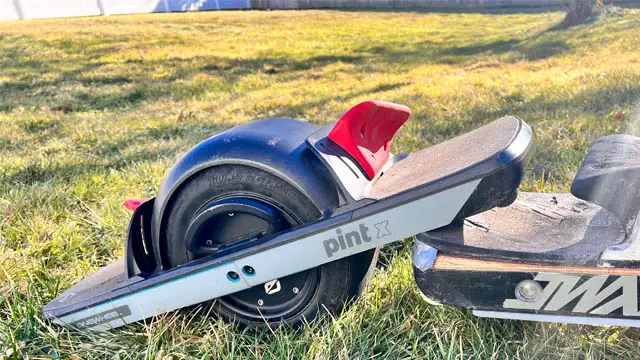
Some purist riders do not like the look of fins on a board. I happen to like them but I do see their point. It does change the look a bit and if that bothers you, a thing to consider is just using one rear fin. Really on a trail ride, most of the benefit comes from having the rear fin to aide in pushing the board up and over roots, rocks and other objects without losing the footing.
The Pint X above has a stock fender as well as the Flightfins set up. The reason being is due to mounting issues. Without the stock fender, I would have a gap between the rails. You need to buy a fender delete kit that Flight Fins sells.
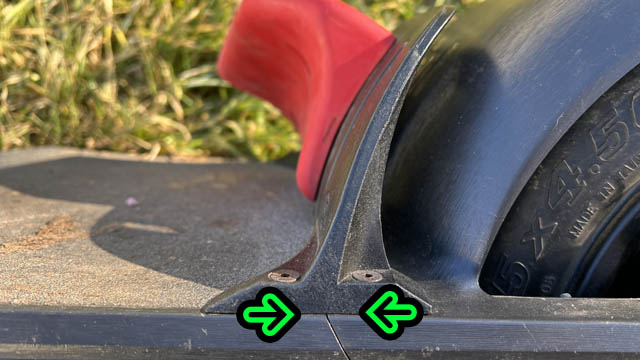
On my Pint, I did not buy the lift or delete kit at the time so I was forced to leave the stock fender on so that the FlightShield would mount straight across the rail. On my JWXR however I did purchase a lift kit and fender delete set up but this was really to protect the hub area. The fender delete kit is essentially a piece of plastic to cover the gap discrepancy when adding the Flight fins on (on the Pint X) but also a way to make the board look a little more polished and does a modest effort in protecting the hub and axel area.
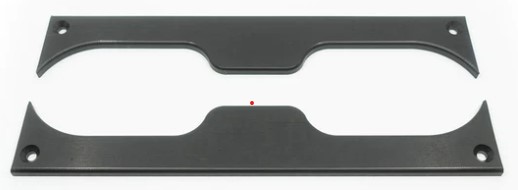
If you have some laminate flooring around the house or maybe you can go to HomeDepot and grab a remanent piece, laminate flooring is about the width of this lift kit. You could feasibly stencil and cut out out the size needed and save yourself some money. To use the lift kit, required me to use the delete kit so that all mounted smoothly. You cannot have one without the other on the XR.
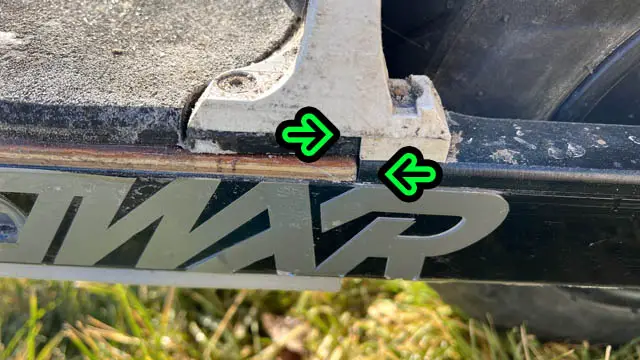
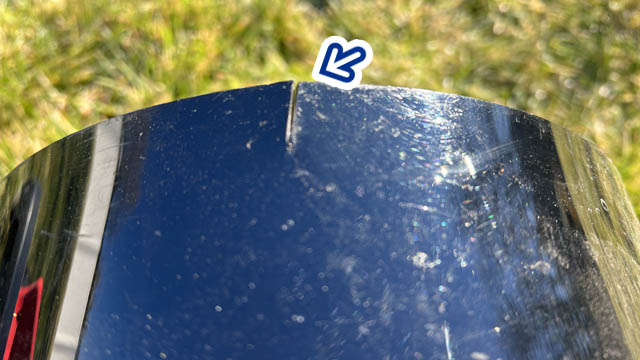
Another thing to consider is if you do purchase a polycarbonate fender and do a lot of trail riding, you want to consider that your board will at some point roll over.
My polycarbonate fender had cracked from a board rollover and is on its way into splitting in half. I do recommend stenciling the fender on the top of some Tupperware and cut yourself a replacement if you want to save money. If you want to buy only one fender, do not go with polycarbonate and stick with the nylon fenders FlightFins sells. They are far more rugged.
On the Fence? Get FlightFins Minis
FlightFins minis are bidirectional. If I were in the market for another pair, I would just opt for minis. They are enough of a “wedge” between the board and the fin to get the lift you need. Granted, minis are not as securing as a full fin however many complaints is that fins lock the foot down too much and possibly can cause injury in an accident. I don’t see this as a concern really however with minis, there is even less securing but just enough to get your board unweighted and over obstacles.
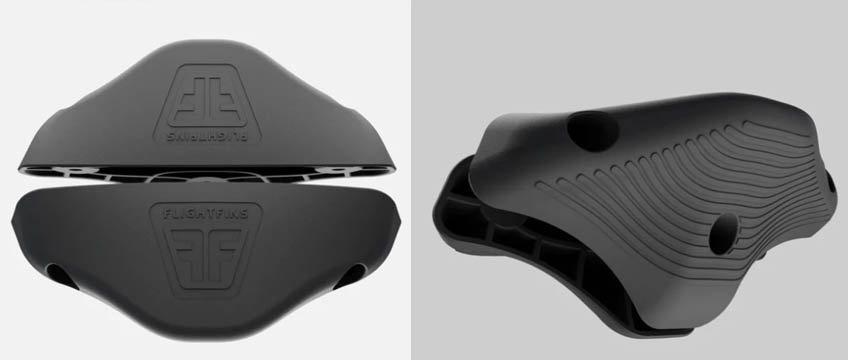
FlightFins Minis are the response to the wedge product which are similar smaller style fins. Wedges are generally 3D printed but essentially function the same as Minis. The FlightFins Mini have a pocket on the backside to hide an Airtag. This really is a great place to easily check and replace an Airtag battery. If you haven’t tagged your board yet, you should place an Airtag somewhere on it. If its ever stolen, tracking down your Onewheel will be no problem.
Available Models
FlightFins are available for all model Onewheels (V1, Plus, XR, Pint, Pint X and GT). The V1, Plus and XR versions are the same. Pint and Pint X are also the same. The GT FlightFins have a revamped updated style where the FlightShield has some coverage for the controller and battery box.
The GT FullFlight setup also comes with a trim piece that covers the rail. No need for a Fender delete like the XR models! FlightFins also now offers Black Oxide bolts and weatherproof stainless steel hardware.
Conclusion
The full Flight System may add a few ounces to the board. The real only gripe I’ve heard on Flightfins is the look of them, the locking down of the feet or that they are a handicap when riding. I personally think Flightfins add a unique look to your ride. If you are concerned about your feet being trapped on the board in a fall, you can get minis. I have rode with fins for over a year and my feet have never been trapped on a fall. That being said however I do have 2 out of 3 boards with fins because sometimes a friend rides regular where my stances are set for goofy. If I were in the market for FlightFins today, I would just get Minis.
The bidirectional use of Minis is ideal. They lock in enough for trail riding. I’m not looking to lift over large object, I just want some resistance on the board to ‘push and unweight’ it just a little more than I could without fins. Yes, my GT still doesnt have fins because I do want a board where I can practice tricks on it without having to worry about landing on a fin. If you have only one board, I’d get them. You can always remove them to do some trick riding.
F.A.Q.’s
You can only bonk off an object with a Onewheel. To do an ‘Ollie’ you or to jump over an obstacle, bend your knees before the object and evenly jump on both sides of the board while squeezing slightly towards the fins.
Yes, its actually all you need for trail riding. The rear fin allows you to pull the board over obstacles on trails (such as roots, stones, etc).
FlightFins sells extenders that will add a little more coverage over the foot. For FlightFins, you do not need the entire fin to go over the foot. FlightFins Minis especially do not cover the whole foot. The intent is just to squeeze against it when unloading from the Onewheel.
The FullFlight system can be installed in about 30 minutes with a basic Phillips-Head screwdriver and an Allen key. The Allen key is provided with purchase.
No. Flight Fins are entirely bolt-on and can be removed with no evidence they were ever installed.
No, FlightFins do not void the Onewheel warranty.
